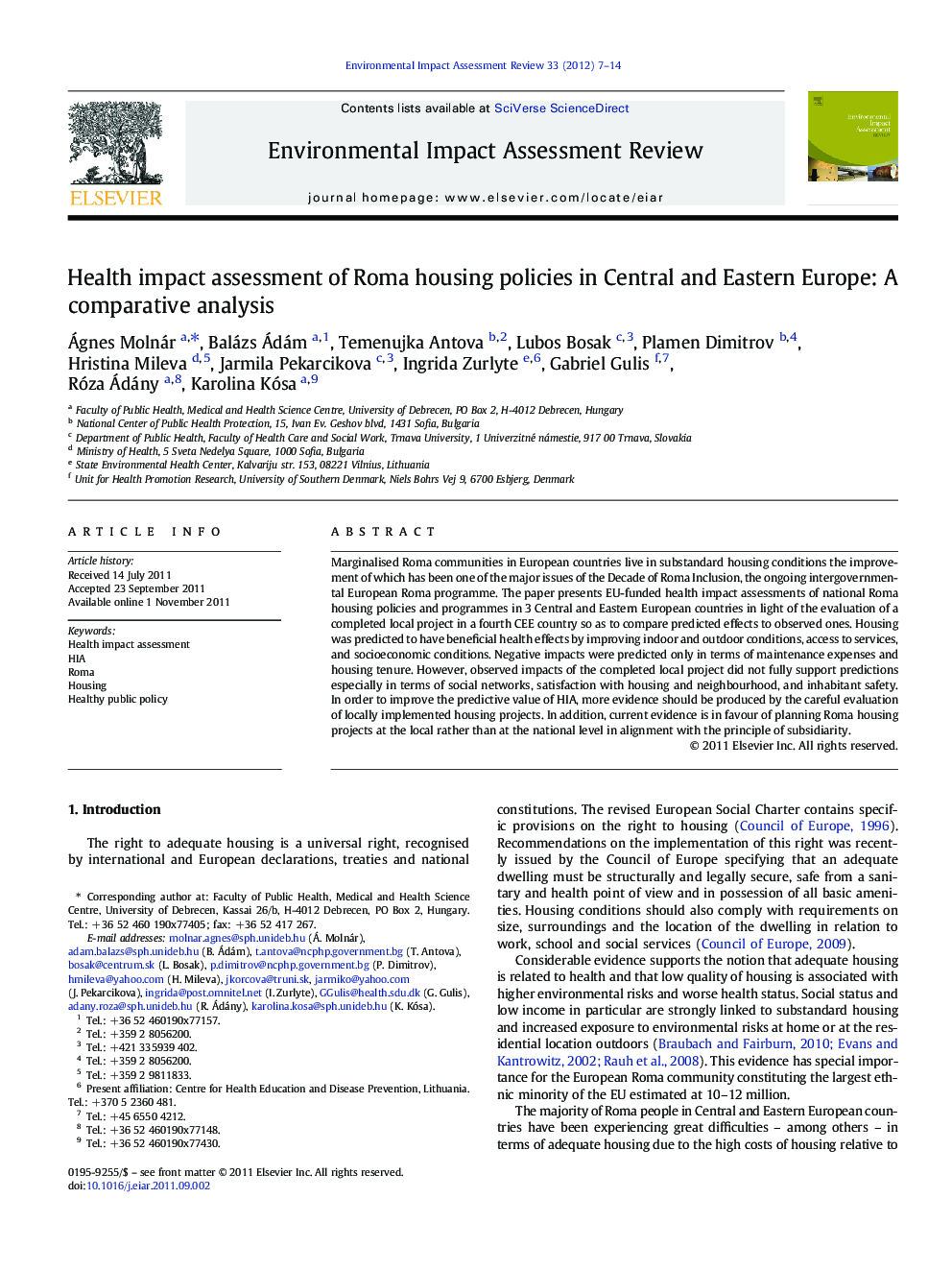| Article ID | Journal | Published Year | Pages | File Type |
|---|---|---|---|---|
| 1052860 | Environmental Impact Assessment Review | 2012 | 8 Pages |
Marginalised Roma communities in European countries live in substandard housing conditions the improvement of which has been one of the major issues of the Decade of Roma Inclusion, the ongoing intergovernmental European Roma programme. The paper presents EU-funded health impact assessments of national Roma housing policies and programmes in 3 Central and Eastern European countries in light of the evaluation of a completed local project in a fourth CEE country so as to compare predicted effects to observed ones. Housing was predicted to have beneficial health effects by improving indoor and outdoor conditions, access to services, and socioeconomic conditions. Negative impacts were predicted only in terms of maintenance expenses and housing tenure. However, observed impacts of the completed local project did not fully support predictions especially in terms of social networks, satisfaction with housing and neighbourhood, and inhabitant safety. In order to improve the predictive value of HIA, more evidence should be produced by the careful evaluation of locally implemented housing projects. In addition, current evidence is in favour of planning Roma housing projects at the local rather than at the national level in alignment with the principle of subsidiarity.
► Predictive validity of HIA of national Roma housing policies – in light of current evidence – is low. ► Implemented housing projects should be comprehensively evaluated to improve reliability of HIA. ► Roma housing projects should be planned at the local rather than at the national level. ► HIA should be used to plan Roma housing projects at the local level.
